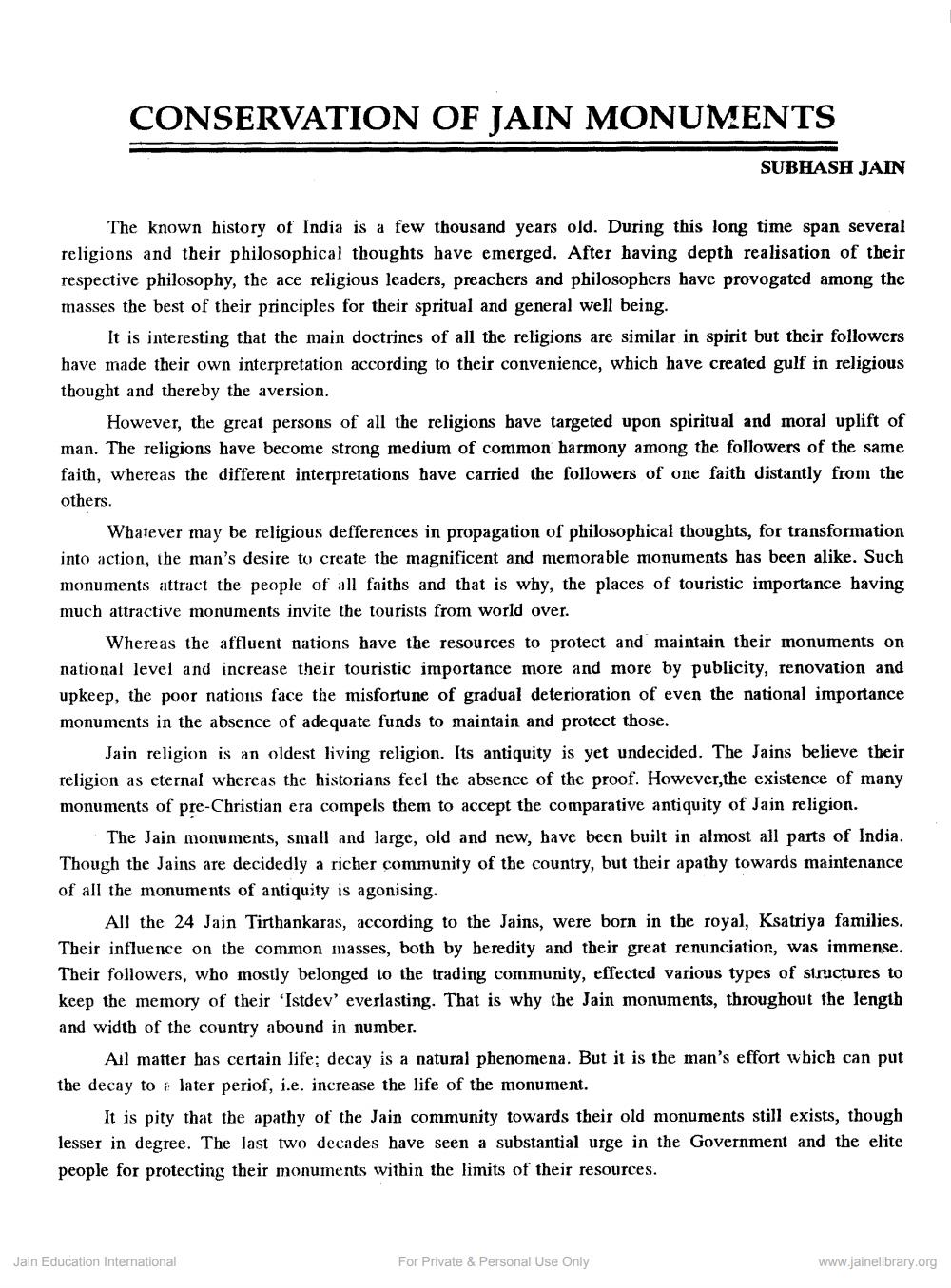________________
CONSERVATION OF JAIN MONUMENTS
The known history of India is a few thousand years old. During this long time span several religions and their philosophical thoughts have emerged. After having depth realisation of their respective philosophy, the ace religious leaders, preachers and philosophers have provogated among the masses the best of their principles for their spritual and general well being.
SUBHASH JAIN
It is interesting that the main doctrines of all the religions are similar in spirit but their followers have made their own interpretation according to their convenience, which have created gulf in religious thought and thereby the aversion.
However, the great persons of all the religions have targeted upon spiritual and moral uplift of man. The religions have become strong medium of common harmony among the followers of the same faith, whereas the different interpretations have carried the followers of one faith distantly from the others.
Whatever may be religious defferences in propagation of philosophical thoughts, for transformation into action, the man's desire to create the magnificent and memorable monuments has been alike. Such monuments attract the people of all faiths and that is why, the places of touristic importance having much attractive monuments invite the tourists from world over.
Whereas the affluent nations have the resources to protect and maintain their monuments on national level and increase their touristic importance more and more by publicity, renovation and upkeep, the poor nations face the misfortune of gradual deterioration of even the national importance monuments in the absence of adequate funds to maintain and protect those.
Jain religion is an oldest living religion. Its antiquity is yet undecided. The Jains believe their religion as eternal whereas the historians feel the absence of the proof. However, the existence of many monuments of pre-Christian era compels them to accept the comparative antiquity of Jain religion.
The Jain monuments, small and large, old and new, have been built in almost all parts of India. Though the Jains are decidedly a richer community of the country, but their apathy towards maintenance of all the monuments of antiquity is agonising.
All the 24 Jain Tirthankaras, according to the Jains, were born in the royal, Ksatriya families. Their influence on the common masses, both by heredity and their great renunciation, was immense. Their followers, who mostly belonged to the trading community, effected various types of structures to keep the memory of their 'Istdev' everlasting. That is why the Jain monuments, throughout the length. and width of the country abound in number.
All matter has certain life; decay is a natural phenomena. But it is the man's effort which can put the decay to later periof, i.e. increase the life of the monument.
It is pity that the apathy of the Jain community towards their old monuments still exists, though lesser in degree. The last two decades have seen a substantial urge in the Government and the elite people for protecting their monuments within the limits of their resources.
Jain Education International
For Private & Personal Use Only
www.jainelibrary.org




